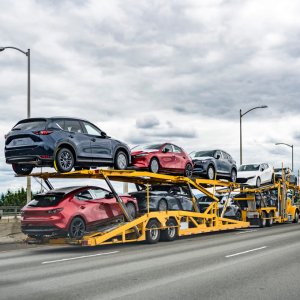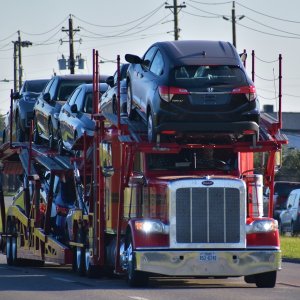AASA Sees Bright Future for Aftermarket Suppliers

STORY INLINE POST
Q: How has the automotive aftermarket evolved in recent years and how does AASA support it?
A: The Motor & Equipment Manufacturers Association (MEMA), which is AASA’s parent association, was established in 1904 and has evolved alongside its members and the automotive industry. AASA represents suppliers and manufacturers in North America, companies like Dayco, Gates, Robert Bosch, Gold Eagle, SnapOn, PitStop and hundreds more.
The most crucial and important initiative that AASA is addressing for the aftermarket industry is the industry access to repair data. This issue is not a new one; almost 20 years ago, On-Board Diagnostics (OBDII) was introduced to control emissions and reduce air pollution. The aftermarket did not know if it would gain access to a now more secured vehicle. However, thanks to the associations in the industry, the aftermarket was able to overcome the potential obstacle and ensure access to repair facilities and parts manufacturers. The challenge is pretty much the same today. With the introduction of Advanced Driver Assistance Systems (ADAS) to make vehicles safer, vehicle manufacturers are trying to keep crucial repair data away from the independent aftermarket, which includes thousands of repair facilities and the DIY community.
Q: How is AASA working to promote the right to access vehicle data?
A: AASA’s top initiative would allow aftermarket companies to access vehicle repair data. Parts manufacturers and mechanics need that data to repair parts and vehicles. In the US, the aftermarket would not have access to that data, forcing car buyers to return to dealerships for maintenance. This will be an enormous problem simply because the dealers do not have enough bays to service all the vehicles on the road, not to mention the issue with rural communities that do not have dealerships nearby.
AASA’ government advocacy team is representing the aftermarket suppliers on Capitol Hill to inform policy makers of the severity of the problem and the consequences if the automotive aftermarket does not have access to vehicle data. Millions of jobs on the service side as well as parts sales could be lost. In addition, car owners should have the right to decide where the data goes. The Right to Repair bill has been introduced and now has more than 10 co-signers from both the democratic and republican parties.
Q: How is technology shaping the way people engage with their vehicles?
A: technology is and will continue to enable customers to be more connected to their vehicles. Drivers will have mobile applications and accessories plugged into their cars and will receive live notifications of the state of the vehicle, such as battery life. When vehicles can communicate with the consumer, people will become much more aware of what is going on with their car. However, they need the right to access that data. This will make vehicles both safer and dependable.
Q: What's the overall mission of the association and why should aftermarket companies become members?
A: MEMA has four divisions: AASA, focused on light duty aftermarket suppliers. HDMA, focused on commercial vehicle and off highway suppliers. MERA, focused on sustainable manufacturing and re-manufacturer suppliers, and OESA, focused on original equipment suppliers. Our mission is to advance the business interests of our supplier members, whether by advocating for them in Washington DC, generating networking events or providing them research and industry analysis. We connect members to what matters. AASA is a supplier-driven organization that exists to help members become more profitable, innovative and influential.
Q: How has the aftermarket evolution expanded its scope to new companies entering the sector?
A: AASA’s members include manufacturers of tools, equipment, chemicals, components and parts, as well as technology integral to the vehicle. The evolution we are seeing in the aftermarket has opened the door to new players: technology suppliers. For example, a new member developed a predictive analytics tool for vehicles two years ago that involved a plugin for the car that can read the vehicle and get data from shops within the region. This analysis allows users to become aware of common problems with similar vehicles within the same region, as well as obtain preventive maintenance. This company, PitStop, is a proud member of AASA and our Mobility Technology Council (MTC).
Q: How has the slump in new vehicle sales boosted the aftermarket’s growth?
A: Traditionally, the automotive aftermarket is a steady growth market, with average growth rates of 3 to 5 percent annually. The miles driven and the age of vehicles are the main drivers of aftermarket growth. When new vehicle sales go down, the aftermarket usually sees strong growth due to consumers repairing their vehicles instead of replacing them. Gas prices and inflation do impact the sector, but growth in the aftermarket is still steadily increasing.
We expect the aftermarket to continue growing. While new vehicle sales will slowly return to normal, vehicles in the US have an average age of over 12 years. Mexico’s average age is over 15 years, opening great opportunities for aftermarket players.
Q: How is the aftermarket preparing for the transition to EVs?
A: The association is very active in educating and keeping members informed in EV trends and studies. AASA has been partnering with large firms to prepare for EVs and ADAS-equipped vehicles and produced landmark studies over the years with PWC, Roland Berger and Boston Consulting Group, to name a few. While the transition will not happen tomorrow, it is never too soon to start helping companies and suppliers that make ICE vehicle parts to map the road ahead.
The EV population will start out small and will take a time to grow. The product categories that will see continued grow are those supplying ADAS components. We are encouraging companies to be innovative in those areas. While the vehicle park will take time to shift, there are growing opportunities for suppliers.
The Automotive Aftermarket Suppliers Association (AASA) is one of the four divisions of the Motor & Equipment Manufacturers Association (MEMA). AASA works to advance the supplier industry following the vision of a high-growth, profitable, innovative and influential aftermarket industry.








 By Antonio Gozain | Senior Journalist and Industry Analyst -
Mon, 08/01/2022 - 15:30
By Antonio Gozain | Senior Journalist and Industry Analyst -
Mon, 08/01/2022 - 15:30
















